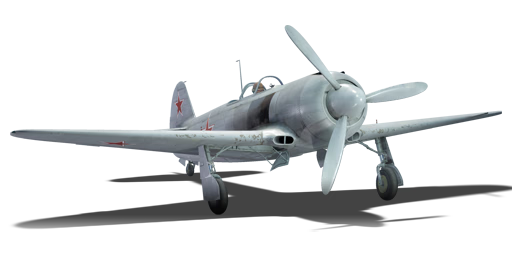

Aviation
Yak-3U
IV
Rank
AB
5.7
RB
5.7
SB
6.0
Battle rating
USSR
Research country
Fighter
Main role
63,000

Research
200,000

Purchase
General information
Flight performance
Max speed
at 6,000 m
695652730664 km/h
Rate of Climb
26.521.832.621.8 m/s
Turn time
1819.417.218.8 s
Max altitude
10,500 m
Takeoff Run
360 m
Landing
flaps
flaps
Take-off
flaps
flaps
Combat
flaps
flaps
Air
brake
brake
General characteristics
Crew
1 person
Engine
Length
8.5 m
Wingspan
9.4 m
Wing Loading
181 kg/m²
Weight:
Base weight
2.442.512.372.5 t
Fuel in main tanks
0.34 t (41m)
Limits:
Max Speed Limit (IAS)
700 km/h
Mach Number Limit
0.73 M
G limit
≈ -9/12 G
Flap Speed Limit (IAS)
280 km/h
Gear Speed Limit (IAS)
320 km/h
Offensive armament
2 × 20 mm B-20S cannon
Ammunition
240 rounds
Fire rate
750 shots/min
One-second Burst Mass
1.21 kg
| Belt | Belt filling | Armor penetration (mm) at a distance: | |||||
|---|---|---|---|---|---|---|---|
| 10 m | 100 m | 500 m | 1000 m | 1500 m | 2000 m | ||
| FI-T/AP-I | 28 | 24 | 14 | 7 | 4 | 2 | |
| FI-T/HEF/AP-I/FI-T | 28 | 24 | 14 | 7 | 4 | 2 | |
| HEF/FI-T/AP-I | 28 | 24 | 14 | 7 | 4 | 2 | |
| FI-T/FI-T/FI-T | 4 | 4 | 4 | 4 | 4 | 4 | |
| AP-I/FI-T/AP-I/AP-I | 28 | 24 | 14 | 7 | 4 | 2 | |
| AP-I/HEF/HEF/FI | 28 | 24 | 14 | 7 | 4 | 2 | |
Economy
Repair cost
Basic → Reference
AB
2,994 → 3,728 

RB
6,969 → 8,676 

SB
10,608 → 13,207 

Crew training
57,000 

Experts
200,000 

Aces
1,100 

Research Aces
520,000 

Reward multiplier
AB / RB / SB
100 / 230 / 490 % 

172 % 

Total cost of modifications
52,900 

90,800 

Talisman cost
1,700 

Flight performance | |
|---|---|
Survivability |
|---|
Weaponry |
|---|
Rating by players
You must play more than 3 battles for the last week and more than 10 battles in a vehicle to rate it.
Like:
68
Flight performance:
Not enough ratings
Survivability:
Not enough ratings
Aerial combat:
Not enough ratings
Ground attack:
Not enough ratings
Balance:
Not enough ratings
Tips & Tricks
This space is currently empty
Do you know any interesting vehicle features?
Loading...
No articles about this vehicle yet
Become the first author and get rewards!
Write a guide, tell about interesting historical facts, make a tutorial or simply an interesting post.
No more content